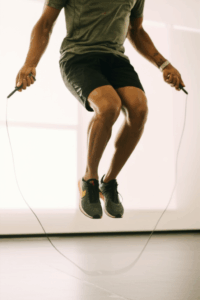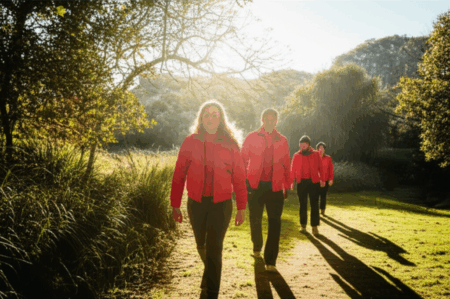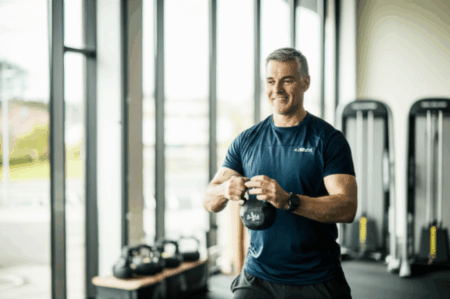As the vibrant hues of summer fade and the crisp, invigorating air of autumn settles in, many find themselves yearning for a fresh start. This seasonal shift presents an ideal opportunity to re-engage with personal fitness, shake off any summer sluggishness, and establish a consistent exercise routine. However, transitioning back into a regimen after a break, or simply finding new motivation as the days shorten, can be a challenge.
Embracing a fall exercise routine offers a wealth of benefits beyond just physical health. Regular physical activity can boost your immune system just in time for flu season and significantly improve mental well-being, helping to combat seasonal mood changes or symptoms of Seasonal Affective Disorder (SAD). Cooler temperatures can also make outdoor workouts more comfortable and enjoyable than in the heat of summer.

Setting Yourself Up for Success: Planning Your Fall Fitness Journey
A well-structured plan is the cornerstone of a sustainable exercise routine. Instead of diving into intense workouts immediately, a gradual and thoughtful approach will help prevent injury and burnout.
Start Slow and Be Realistic
If you’re returning to exercise after a break, remember that your current fitness level may not be where it once was. Begin with shorter, less intense workouts and gradually increase duration and intensity as your body adapts. Overexertion early on can lead to injuries or quick burnout. For instance, if you were a runner, start with brisk walking before transitioning back to jogging or running.
Define Your Goals with SMART Principles
Having clear, specific goals provides purpose and direction for your workouts. Consider what you want to achieve: build strength, improve endurance, lose weight, or enhance overall well-being. The SMART (Specific, Measurable, Achievable, Relevant, Time-bound) goal framework can be highly effective. For example, instead of “I want to get fit,” aim for “I will complete three 30-minute cardio sessions and two 20-minute strength training sessions each week for the next two months”.
Schedule Your Workouts Like Important Appointments
Treating your exercise sessions as non-negotiable appointments in your calendar increases the likelihood of adherence. Plan your workouts in advance, integrating them into your weekly schedule to ensure consistency. This simple act transforms intention into commitment.
Prioritize a Doctor’s Consultation
Before resuming any strenuous physical activity, especially if you have chronic health conditions or have been inactive for an extended period, it’s wise to consult your primary care provider. They can help determine a safe starting point and identify any potential health concerns.

Diversifying Your Routine: Engaging Activities for Autumn
Variety is not only the “spice of life” but also key to a sustainable workout schedule, preventing boredom and targeting different muscle groups. Fall offers unique opportunities to keep your routine fresh and enjoyable.
Embrace Outdoor Activities
The cooler, crisp autumn air is perfect for outdoor exercise.
- Hiking and Cycling: Explore local trails and enjoy the vibrant fall foliage. These activities offer varied motion and a mental health boost from being outdoors.
- “Fun Runs” and Marathons: Fall is a popular season for charity runs and themed races like “turkey trots.” Participating can add a festive and social element to your fitness.
- Yard Work: Activities like raking leaves, gardening, or stacking firewood can be surprisingly effective workouts, incorporating stretching, bending, and lifting.
Incorporate Indoor Workouts
As days get shorter and temperatures drop, indoor options become increasingly important.
- Strength Training: Focus on bodyweight exercises like squats, lunges, and push-ups, gradually adding weights or resistance bands as strength improves. Compound movements that work multiple muscle groups are highly efficient.
- Cardiovascular Exercise: Treadmills, ellipticals, cycling, or dancing are excellent ways to get your heart rate up indoors. Dancing can be a fun way to burn calories and lift your spirits.
- Flexibility and Balance: Yoga, Pilates, or Tai Chi can improve flexibility, range of motion, and balance, which is particularly beneficial for fall prevention, especially for older adults.
Hybrid Fitness Approach
Consider a hybrid workout approach that blends at-home and in-gym training. This offers flexibility, combining the convenience of home workouts with access to a gym’s resources and social environment.

Sustaining Your Motivation Through the Season
Maintaining motivation can be challenging, especially as the novelty of a new routine wears off. Several strategies can help you stay on track.
Find Your “Why” and Stay Mindful
Reflect on your core motivations: improved health, increased energy, stress reduction, or simply feeling better. Keeping these long-term goals in mind can provide the drive needed to push through less enthusiastic days.
Partner Up for Accountability
Working out with a friend, partner, or joining a group fitness class can add a social and motivational aspect to your routine, providing accountability and making exercise more enjoyable.
Incorporate Movement into Daily Life
You don’t always need a formal workout session. Look for simple opportunities to move more throughout the day: take the stairs, walk or cycle to work, do light stretches while watching TV, or stand more during daily tasks. Even short bursts of activity can accumulate and contribute to overall fitness.
Track Progress and Celebrate Milestones
Monitoring your workouts and measuring progress regularly, whether through a fitness app, journal, or photos, can be a powerful motivator. Celebrate small achievements along the way to build confidence and maintain momentum toward your larger goals.
Adjust Your Routine to Shorter Days
Reduced daylight hours in fall might necessitate shifting your workout times. Consider exercising in the mornings to make the most of natural light, or during midday breaks, to leverage potentially warmer temperatures and daylight exposure. Outdoor activity during daylight can also help boost mood.

Prioritizing Recovery and Listening to Your Body
Recovery is as crucial as the workout itself for building strength and preventing injuries.
- Warm-up and Cool-down: Always begin with a warm-up and end with a cool-down to prepare your body for activity and aid recovery.
- Stretching: Incorporate stretching daily to improve flexibility and range of motion, which is essential for muscle function and injury prevention.
- Rest Days: Allow your body adequate rest days to repair and adapt. Overtraining can lead to soreness, injury, and burnout.
- Hydration and Nutrition: Proper nutrition, including seasonal fruits and vegetables, and adequate hydration are essential to fuel your workouts and support recovery.
- Sleep: Prioritize good sleep quality, as it plays a significant role in muscle repair and overall well-being.
Getting back into a fall exercise routine is an opportunity to revitalize your health, both physically and mentally. By starting slow, setting realistic goals, embracing a variety of enjoyable activities, and prioritizing recovery, you can build a sustainable fitness plan that keeps you energized and motivated throughout the autumn season and beyond.







